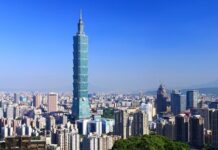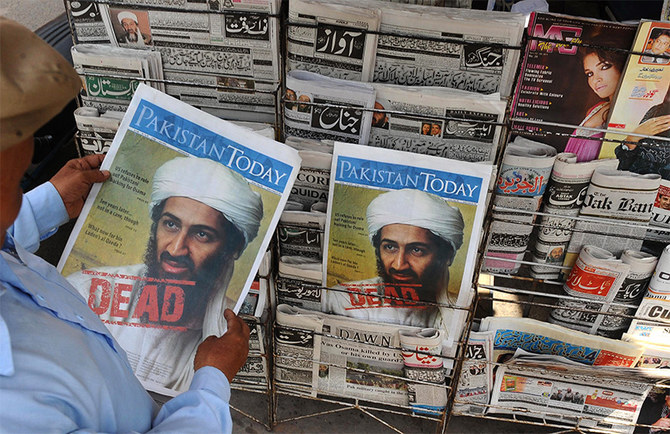ISLAMABAD: Children play cricket in a patch of scorched grass and scattered rubble in Abbottabad — all that remains of the final lair of the man who was once the most wanted person on the planet.
It was in this city that Osama bin Laden was killed in the clandestine “Operation Geronimo” raid by US Navy Seals in the early hours of May 2, 2011.
It was claimed that Bin Laden had been living in seclusion for at least five years in Abbottabad, hidden behind the high walls of an imposing white building less than two kilometers from the Pakistan Military Academy (PMA).
“It was a very bad thing for this place and for the whole country,” said Altaf Hussain, a retired schoolteacher, walking down an alley alongside Bin Laden’s former residence. “By living here, Osama gave this city a bad reputation.”
The raid caught Pakistan between a rock and a hard place.
Officials could deny knowing he was there — but in doing so they would effectively be admitting to a shocking intelligence failure.
They could also have admitted that the world’s most infamous fugitive was under their protection, but that would concede being powerless to prevent Washington from carrying out such a daring raid on sovereign soil.
They opted for the former, but the US operation reinforced an already strong anti-American sentiment among a population tired of the heavy financial and human toll paid for the war on terror — and Islamabad’s alliance with Washington after the September 11, 2001 attacks.
At the time of his death, Bin Laden’s local popularity had waned.
“Before, I remember that people named their children Osama, even in my village,” said journalist Rahimullah Yusufzai, a specialist in militant networks.
Bin Laden’s death did not stop militancy from spreading in Pakistan, and conservative religious movements became even more influential.
Over the next three years, several terror groups — foremost among them the proscribed Afghanistan-based Tehreek-e-Taliban Pakistan (TTP) — carried out bloody attacks and established strongholds in erstwhile tribal areas bordering restive Afghanistan.
Operation Zarb-e-Azb, a military campaign, launched in 2014 helped bring down the violence, although a recent series of minor attacks has raised fears that extremists are regrouping.
Without its charismatic leader, Al Qaeda “survived, but barely” and is no longer able to launch major attacks in the West, says Yusufzai.
The group is also no longer “a great threat to Pakistan,” believes Hamid Mir — the last journalist to interview Bin Laden face-to-face — although other groups such as the so-called Islamic State remain so.
He claimed while the Al-Qaeda founder is still seen as a “freedom fighter” by some, many also acknowledge him as “a bad person who killed innocent people and caused destruction — not only in Pakistan but in many countries, in violation of the teachings of Islam.”
Even in Abbottabad, a prosperous and largely tolerant medium-sized city, there is ambiguity toward Bin Laden, whose house was razed in 2012 by authorities so that it would not become a memorial.
“In this street, there are differences of opinion,” says teenage former neighbour Numan Hattak. “Some say he was good, others that he was bad.”





















